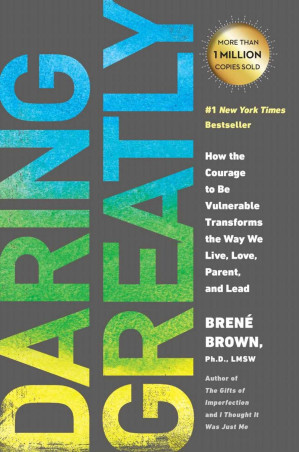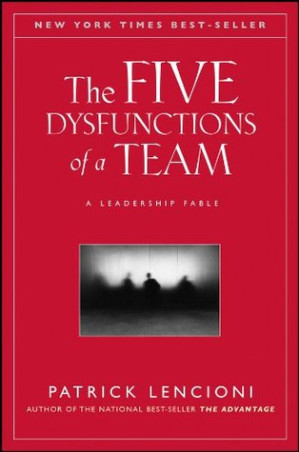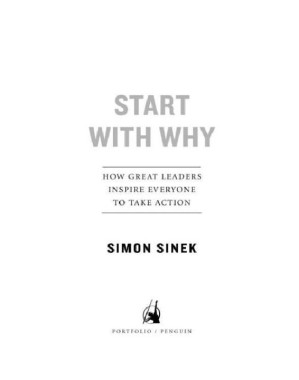Rumbling with Vulnerability
Vulnerability is not weakness, but the birthplace of courage, innovation, and authentic connection

Book summary
by Brené Brown
Brave Work. Tough Conversations. Whole Hearts.
Research-based approach to courageous and vulnerable leadership
Topics
Read this book systematically, focusing on one skill set per week to allow for practice and reflection. After each chapter, identify one specific leadership situation where you can apply the concepts. Use the BRAVING framework as a checklist for team meetings and one-on-ones. Keep a leadership journal to track your progress with vulnerability, values alignment, trust-building, and resilience practices.
Things to know before reading
Based on seven years of groundbreaking research with over 150 C-suite leaders, "Dare to Lead" provides a practical framework for courageous leadership rooted in vulnerability, empathy, and connection. Brown argues that true leadership requires showing up authentically, having difficult conversations, and building trust through emotional courage in an increasingly complex world.
Brown's research reveals four essential skill sets for daring leadership that can be learned and practiced
Vulnerability is not weakness, but the birthplace of courage, innovation, and authentic connection
Clear values provide the compass for courageous decision-making and ethical leadership
Trust is built in small moments, not through grand gestures or declarations
Resilience is the ability to get back up after failure and transform setbacks into learning
Ready to continue? Launch the Readever reader and keep turning pages without paying a cent.

Brené Brown
How the courage to be vulnerable transforms the way we live, love, parent, and lead

Daniel Coyle
The secrets of highly successful groups and how to build psychological safety

Kim Scott
How to be a kick-ass boss without losing your humanity through caring personally and challenging directly

Simon Sinek
Why some teams pull together and others don't through creating circles of safety
This book offers a research-backed approach that replaces outdated command-and-control models with courage-based leadership practices. Learn how vulnerability becomes your greatest strategic advantage, how to build resilient teams through trust, and why empathy is the foundation of effective leadership in today's rapidly changing business environment. Brown provides actionable frameworks that have been tested across Fortune 500 companies, military organizations, and educational institutions.
Key idea 1
Vulnerability is not weakness, but the birthplace of courage, innovation, and authentic connection
Brown defines vulnerability as uncertainty, risk, and emotional exposure. Rather than avoiding vulnerability, daring leaders learn to "rumble" with it—to lean into difficult conversations and situations with curiosity and courage. This skill set involves being comfortable with uncertainty and leading with authenticity rather than perfection. A rumble is any discussion, conversation, or meeting defined by a commitment to lean into vulnerability.
Remember
Key idea 2
Clear values provide the compass for courageous decision-making and ethical leadership
Daring leaders identify and operationalize their core values, using them as decision-making filters in every situation. Brown emphasizes that values aren't just beliefs—they're behaviors that must be practiced daily, especially under pressure. This section provides concrete tools for identifying your values, translating them into observable behaviors, and ensuring your actions align with them even in challenging circumstances.
Remember
Key idea 3
Trust is built in small moments, not through grand gestures or declarations
Brown introduces the BRAVING framework for building and maintaining trust: Boundaries, Reliability, Accountability, Vault (confidentiality), Integrity, Non-judgment, and Generosity. This practical model helps leaders create psychologically safe environments where teams can innovate, take risks, and engage in productive conflict. The framework provides specific behaviors that build trust incrementally over time.
Remember
Key idea 4
Resilience is the ability to get back up after failure and transform setbacks into learning
This final skill set focuses on developing resilience through a three-step process: reckoning with emotions, rumbling with stories we tell ourselves, and revolutionizing how we live and lead. Brown provides tools for navigating failure, disappointment, and setbacks without losing courage. The process helps leaders recognize their emotional patterns, challenge limiting narratives, and emerge stronger from adversity.
Remember
"Dare to Lead" represents the culmination of Brené Brown's 20+ years of research on courage, vulnerability, shame, and empathy, specifically applied to leadership contexts. Drawing from interviews with 150 global C-level leaders across industries including corporate, military, nonprofit, and educational sectors, Brown provides a practical, actionable framework for leadership in the 21st century. The book challenges traditional notions of leadership that prioritize invulnerability and control, arguing instead that the most effective leaders are those who have the courage to be vulnerable, build trust, and create cultures where people can bring their whole selves to work. Brown's research demonstrates that courage is a teachable, learnable skill set that can be developed through practice and commitment.
Open Readever's reader to highlight passages, ask the AI companion questions, and keep exploring without paying a cent.
"Dare to Lead" stands out as one of the most practical and research-backed leadership books of the past decade. Brown's ability to translate complex psychological concepts into actionable leadership practices makes this book invaluable for leaders at all levels, from first-time managers to seasoned executives. The frameworks are immediately applicable, and the emphasis on emotional intelligence and human connection feels particularly relevant in today's rapidly changing work environments where traditional command-and-control approaches are failing. While some leaders may initially find the focus on vulnerability challenging, Brown's extensive research and compelling real-world examples make a convincing case for why this approach leads to more resilient, innovative, and engaged teams. The book's strength lies in its balance of rigorous research, practical frameworks, and authentic storytelling that demonstrates both the power and feasibility of courage-based leadership.
Current and aspiring leaders seeking to build more human-centered, effective organizations
Managers struggling with team engagement, trust issues, or psychological safety challenges
HR professionals and leadership development specialists creating training programs
Entrepreneurs and founders building company culture from the ground up
Anyone interested in the intersection of psychology, neuroscience, and effective leadership
Leaders facing rapid change, uncertainty, or organizational transformation
Brené Brown is a research professor at the University of Houston where she holds the Huffington Foundation Endowed Chair. She has spent the past two decades studying courage, vulnerability, shame, and empathy, revolutionizing how we understand these concepts in personal and professional contexts. Brown is the author of five #1 New York Times bestsellers, and her TED talk, "The Power of Vulnerability," is one of the top five most viewed TED talks in the world with over 60 million views. Her research has been featured on PBS, NPR, CNN, and in major publications including The Washington Post, The New York Times, and The Wall Street Journal. Brown is also the founder and CEO of Brave Leaders Inc., a courage-building organization that brings her research on leadership to teams and organizations globally. She holds a Ph.D. in social work and has been honored with numerous awards for her contributions to research and public understanding of human behavior.

Patrick Lencioni
Leadership fable about overcoming team dysfunction through trust and commitment

Simon Sinek
Leadership philosophy focusing on purpose and inspiration for lasting impact

Julie Zhuo
Practical guide for new managers from former Facebook executive
Build your personalized reading stack
#1 New York Times Bestseller with over 1 million copies sold
Based on 7 years of research with 150+ global C-level leaders
Practical frameworks for building trust and psychological safety
Tools for having difficult conversations with courage and skill
Evidence-based approach tested across corporate, military, and educational sectors
Sign in to Readever to keep reading with AI guidance, instant summaries, and synced notes.
"Dare to Lead" offers a revolutionary approach to leadership that replaces fear, armor, and perfectionism with courage, connection, and wholeheartedness. Brown's extensive research demonstrates that the most effective leaders in today's complex world are those who have the courage to be vulnerable, build trust through empathy, and create cultures where people feel safe enough to innovate, take risks, and bring their authentic selves to work. The book provides not just inspiration but concrete, actionable frameworks for developing these essential leadership skills. By teaching that courage is a collection of four skill sets that can be learned and practiced, Brown makes daring leadership accessible to anyone willing to do the work. This book is an essential resource for leaders committed to building more human, resilient, and effective organizations capable of thriving in an increasingly uncertain world.
Brené Brown's work in "Dare to Lead" is distinguished by its rigorous research methodology and extensive real-world testing. The book represents a significant contribution to leadership literature because it bridges the gap between academic research on human behavior and practical leadership application. Brown's team conducted in-depth interviews with 150 C-suite leaders across various industries, analyzing thousands of data points to identify what truly distinguishes effective leaders in today's complex business environment.
The Courage-Vulnerability Paradox: Brown's research revealed that the most courageous leaders are also the most vulnerable. This counterintuitive finding challenges traditional leadership models that equate strength with invulnerability. The research shows that leaders who acknowledge uncertainty, take appropriate risks, and admit mistakes build stronger, more innovative teams.
Trust as the Foundation of High Performance: Across all industries studied, teams with high levels of psychological safety and trust consistently outperformed teams without these qualities, even when the latter had more resources or talent. The BRAVING framework emerged from analyzing what specific behaviors build trust most effectively.
Emotional Intelligence as Strategic Advantage: Leaders who demonstrated high emotional intelligence and the ability to navigate difficult conversations achieved better business outcomes, higher employee retention, and more successful innovation initiatives.
Creating a culture where daring leadership can flourish requires intentional effort and consistent practice. Organizations that successfully implement Brown's frameworks typically focus on several key areas:
Leadership Modeling: Senior leaders must demonstrate vulnerability and courage themselves. This includes admitting mistakes, sharing learning moments, and showing up authentically even when it's uncomfortable.
Structured Rumble Practices: Organizations implement regular "rumble" sessions where teams practice having difficult conversations with curiosity and courage. These structured conversations help build the muscle for courageous communication.
Values Integration: Companies move beyond wall posters to truly operationalize their values through decision-making frameworks, performance criteria, and daily behavioral expectations.
Trust-Building Systems: Organizations create systems and processes that support the BRAVING framework, from feedback mechanisms to accountability structures that reinforce trust-building behaviors.
Brown provides several approaches for measuring the impact of daring leadership practices:
Psychological Safety Assessments: Regular surveys and assessments to measure team members' sense of psychological safety and willingness to take risks.
Trust Metrics: Tracking indicators of trust such as feedback quality, collaboration effectiveness, and conflict resolution success rates.
Innovation Indices: Measuring innovation outcomes, idea generation, and calculated risk-taking to assess the impact of courage-building initiatives.
Employee Engagement and Retention: Monitoring changes in engagement scores, retention rates, and employee satisfaction as indicators of cultural health.
Many leaders initially struggle with the concept of vulnerability in professional contexts. Common concerns include:
Fear of Losing Authority: Leaders worry that showing vulnerability will undermine their authority or credibility.
Organizational Culture Barriers: Existing cultures may reward armor and perfectionism.
Lack of Skills: Many leaders haven't developed the emotional intelligence and communication skills required for daring leadership.
Organizations commonly encounter several challenges when implementing daring leadership principles:
Superficial Implementation: Treating vulnerability as a tactic rather than a fundamental leadership approach.
Inconsistent Application: Leaders apply principles selectively or inconsistently.
Measurement Challenges: Difficulty quantifying the impact of culture and leadership initiatives.
Organizations that fully embrace daring leadership principles typically experience significant transformation over time:
Enhanced Innovation: Teams with high psychological safety and trust are more willing to take calculated risks, share unconventional ideas, and innovate without fear of failure.
Improved Decision-Making: Leaders who embrace vulnerability and diverse perspectives make better, more inclusive decisions that consider multiple viewpoints and potential risks.
Stronger Talent Attraction and Retention: Organizations known for courageous, human-centered leadership attract and retain top talent seeking meaningful work environments.
Increased Adaptability: Teams built on trust and courage adapt more quickly to change, uncertainty, and market disruptions.
Sustainable Performance: While command-and-control approaches may deliver short-term results, daring leadership builds the foundation for sustainable long-term performance and organizational health.
"Dare to Lead" arrives at a critical moment in business history when traditional leadership models are increasingly inadequate for addressing complex challenges. Brown's framework provides a roadmap for leadership that is:
Adaptive: Capable of navigating uncertainty and rapid change Human-Centered: Prioritizing people and relationships alongside results Courage-Focused: Building the capacity to take appropriate risks and make tough decisions Trust-Based: Creating the foundation for high-performing, collaborative teams
As organizations continue to face unprecedented challenges from technological disruption, global competition, and changing workforce expectations, the principles outlined in "Dare to Lead" offer a path forward for leaders seeking to build organizations that are both successful and sustainable in the long term.
The book's emphasis on teachable, learnable skills makes courageous leadership accessible to anyone willing to practice and develop these capabilities, offering hope for a future where leadership is defined not by authority or control, but by courage, connection, and the ability to bring out the best in others.
Start reading Dare to Lead for free and unlock personalized book journeys with Readever.